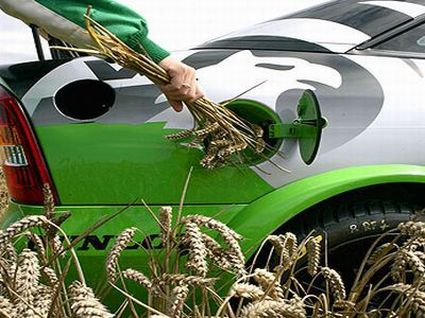Bio-fuels are those that are derived from biomass and use renewable sources of energy usually employing plant matter as the raw material. The most common types of bio-fuels are solid biomass, various biogases, and liquid fuels. As the price of depleting fossil fuel rises, affecting the world economy, biofuels may come to the rescue as a partial or complete replacement for our energy needs.
Bio-fuels can come in many different varieties and some of the first generation of such fuels includes bio-alcohols, Vegetable Oils, green diesel, biogas, Syngas and bio-diesel. Bioethanol is a type of fuel that is already being used in countries such as the United States and Brazil to a certain extent. This type of fuel is manufactured making use of vegetation that is used for feeding livestock. Therefore it does not use edible plants used by human beings which makes it a much better option compared to other edible crops.
Bio-diesel can help in reduction of toxic gases such as carbon monoxide since it uses animal fat, recycled greases and vegetable oils. Even though it can be utilized in its pure form, it is generally used as an additive to normal diesel. This type of fuel is the most popular one in European countries.
There are myriad varieties of bio-fuels and some of them include propanol and butanol but the most widely used bio-fuel is ethanol. Made by fermentation of sugar and starches, ethanol is produced by the action of micro-organisms on these substances. The use of ethanol is widespread in Brazil and is created from molasses, corn, sugarcane and sugar beets. Even though such fuels can decrease the quantity of noxious waste; they are still not entirely cost-effective and competent as compared to gas. Methanol and Butanol are the other types of alcohol based fuels on hand but are made use of to a smaller extent.
Green diesel, which is also known as renewable diesel, is a kind of diesel fuel which is derived from renewable feedstock instead of the fossil feedstock used in many other types of diesel fuels. Green diesel is different compared to biodiesel which is chemically different and made using transesterification instead of using the usual fractional distillation utilized to manufacture green diesel.
Biodiesel is the most ordinary kind of bio-fuel used in Europe and is produced from oils or fats using transesterification and is a liquid not unlike conventional fossil or mineral diesel. Vegetable oil is one more biofuel which can be made use of in some engines and many companies manufacture engines that are adjusted for utilizing straight vegetable oil, without the necessity for after-market modifications.
To know more and explore a complete guide on this link Bio-fuels – An Overview
Article Source:
http://EzineArticles.com/?expert=Ashish_Nayyar

